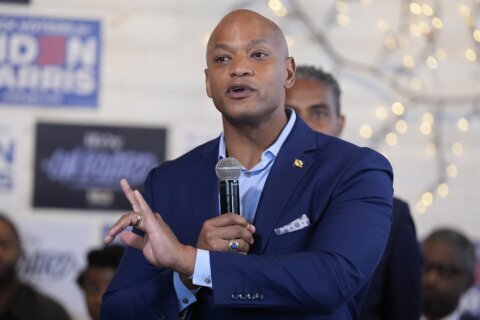Ask Jack Brooks, president of the Chesapeake Bay Seafood Industries Association, how the Maryland crab-picking season ahead looks right now, and he simply said, “Ugly.”
The problem has nothing to do with the supply of crabs expected to be caught and processed in the crab houses of the Chesapeake Bay. The problem is labor.
Brooks said while other industries are facing tight labor markets due to the continuing fallout from the coronavirus pandemic, the issue facing the state’s seafood industry is rooted in the nation’s visa lottery system.
Every year, a total of 66,000 H-2B temporary work visas are up for grabs in a nationwide lottery.
For years, there has been a cap on H-2B visas that allow workers — typically from Mexico — to come to the Eastern Shore to work from April through November. The application process for the seafood operators began in January, Brooks said.
“And in the first two days, they had almost 140,000 requests for 33,000 available visas. So the demand is far outstripping the supply,” he said.
This year in the season that will get underway in April, just one of the 10 crab-picking operations in Maryland won some of the 33,000 visas available nationally, Brooks said. “There’s one company on Hoopers Island, G.W. Hall. They won the lottery, and I’m glad they did. But this is a real problem.”
Jay Fleming, a Maryland photographer who’s documented the challenges facing the watermen and the seafood industry of the Chesapeake Bay, said that’s “one out of 10 in Dorchester County, which is like the epicenter of Maryland crab picking.”
Brooks said he wishes there were an alternative to having to hire workers from other countries each year; then the owners of Maryland’s crab houses could stop having to rely on the vagaries of a lottery system to fill jobs each season.
Brooks referred to the process as a “visa treadmill” that’s driven many operators out of business up and down the East Coast.
Labor organizations have been critical of the practice that brings workers from other countries to fill jobs in the United States, but Brooks said filling any kind of seasonal work is difficult. And finding Americans to work in crab processing is especially tough.
“Our season begins April 1, and right around Thanksgiving, the holidays, Christmas, our season ends so you get laid off. So who wants to lose your job around that time?” he asked.
Maryland’s Gov. Larry Hogan has gone to bat for Maryland’s seafood industry in the past. This year, he again asked congressional leaders to raise the cap on the visas.
“Maryland’s seafood industry is part of what makes us known around the nation and the world,” said Hogan in a letter to members of Congress.
According to the seafood industry’s own study, if seafood processors could fill this year’s vacancies, they would spend $20 million on payroll, nearly $4 million on equipment and vehicles and nearly $8 million more on packaging and local vendors.
By Brooks’ count, for every job filled by a seasonal worker on an H-2B visa, two more jobs are supported.
Brooks said that includes people who make the supplies used in the seafood industry. “The people who make the baskets, make the crab pots … the trucks, the refrigeration, the mechanics. I mean, the list goes on and on,” he said.
Brooks isn’t sure if there will be any exemptions on the visa caps this year, but he’s not giving up.
Like the watermen of the Chesapeake Bay, Brooks said working in the seafood industry is in his blood. His family owns the J.M. Clayton Co., started by his great grandfather. He’s quick to boast that it’s “still family-owned and operated.”








